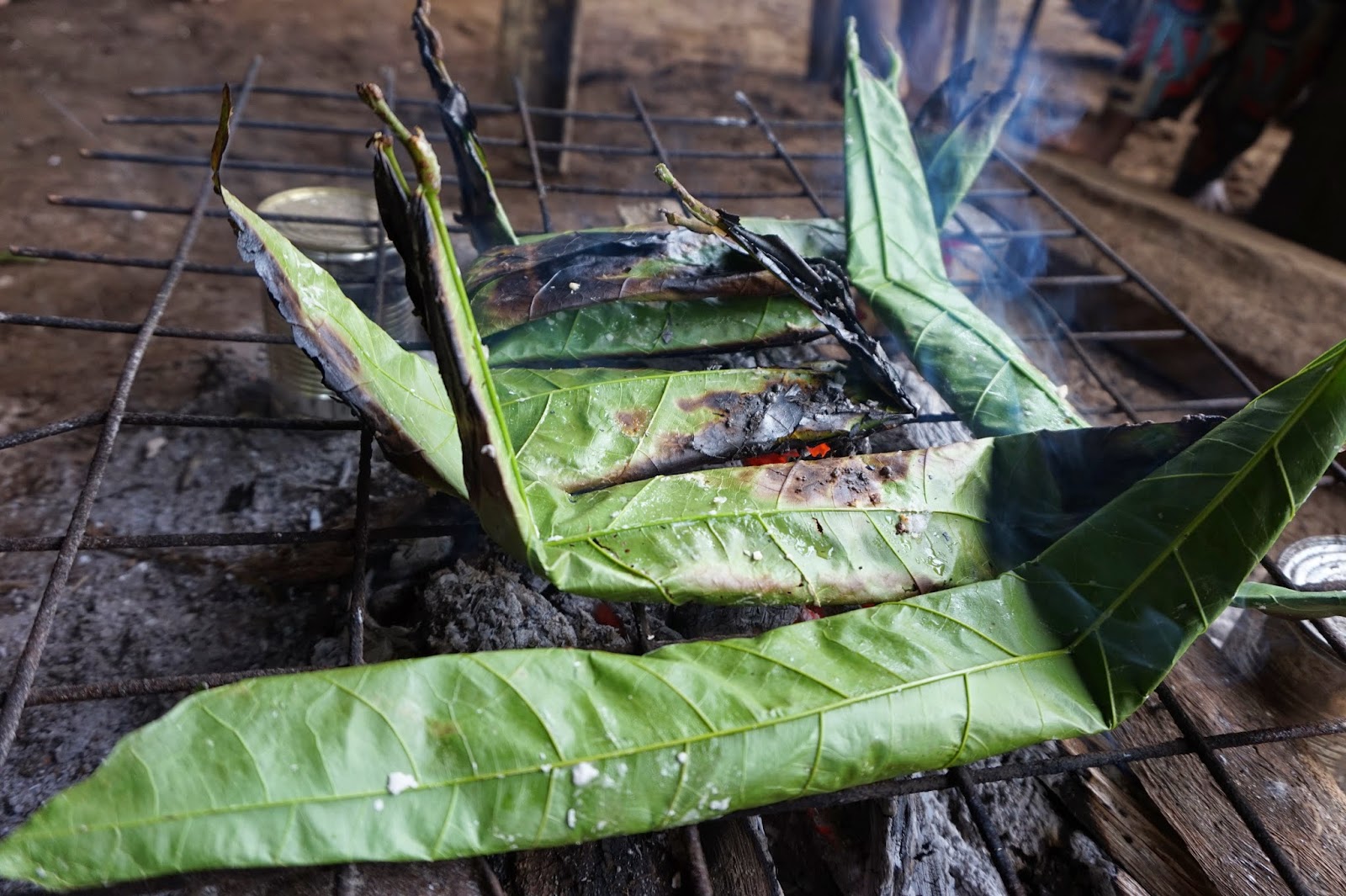Week 1 Part 3: Wasim Saksak (Washing Sago)
“Philda’s here,” April’s voice came up through the floor
boards of our house to where I was washing the dishes from the night before.
Today was the day we were going to learn how to wasim saksak (wash sago). I was excited but also puzzled. First of
all, I really didn’t know a thing about washing sago, and second, I had no idea
what sago really was rather than the head knowledge that it’s a type of palm
tree that some people in the world eat as a main starch. Helpful starting point
– not. I dried my hands, grabbed my bag and headed down to meet April, Philda
and another sister Immaculata (Imma). We trekked out onto the road and picked
up an “aunt” and her kids along the way because we were going to the part of
the sago forest that belonged to her and her husband. We tramped out through
the garden area and then dipped down into the soggy, rain drenched sago palm
forest.
 |
| Sago with coconut inside cooked in cocoa leaves on the fire |
Our Aunt Sempi (so called by Philda because she’s from the
village of Sempi) guided us to the small bend in the river where we would be
washing the sago. She then showed us the incredibly ingenious set-up that’s
used to wash sago. As I found out, sago for eating is made by felling a sago
palm that has begun to bloom at the top. Then, you use a chipper or a small
hammer and chip the bole of the felled palm into tiny chips. After that, you
haul the chips to an area with water and then proceed to use the washing
“table” invention to wash the edible starch from the tiny chips and collect it
while draining off the wastewater. They do this on a table that is set up in
tiers using materials from the surrounding bush including sago and another tree
called a limbum tree. The limbum has multiple portions that are
used for timber, brooms, mats/water collectors/scoops, and much more. The saksak washing table has a screen that
is fitted to the top where you put the sago chips. Underneath is a limbum bark piece that is like a
leathery mat. This is where the edible portion of the sago settles as you wash
it. This piece of limbum is positioned so that the water overflows and runs
into a lower tier with yet another limbum
mat with a hole in the center that has a sago frond “filter” that catches the
water as it drains from the hole and drains into the final tier of the washing
table which is another limbum mat
that drains into the river. The top level of the washing table catches most of
the starch that goes from the pink of the chipped sago to a pure white like a
cornstarch.
 |
| The finished product! Crunchy, sweet and super yummy! |
As soon as Imma brought the first load of chips to the
washing table Aunt Sempi jumped in with gusto to show us how to wash sago. She
dumped a heap of chips onto the screen and then poured a bucketful of water
over the top. She kneaded it and squeezed it until the chips were dry. She
repeated this another two times and discarded the chips after that. When she’d
finished, she turned to us and asked us if we wanted to try, and for the rest
of the day April and I took turns with Aunt Sempi, Imma and Philda washing sago
until our arms were tired and our skin was pinkish-purple from the sago itself
(for days afterward everyone asked us if we’d be wasim saksak because of our tinted skin). Finally, when all the
sago was washed Aunt Sempi built a little fire and prepared our first taste of
sago called tanim saksak
(turned/stirred sago) which is sort of like a pink gelatin when it was
finished. We took a taste of this hot, pink jelly combined with garden greens
and two-minute noodles. It was good and very filling (and looked a lot more
appetizing to me than the sago beetles the kids had found earlier in the day,
plopped into the fire and munched on like popcorn). Later Philda taught us four
or five other ways to cook sago and she said that was just a few of the ways we
could eat it. All in all it was a great day and a great experience in the life,
work and foods of our Papua New Guinean family.


Comments
Post a Comment